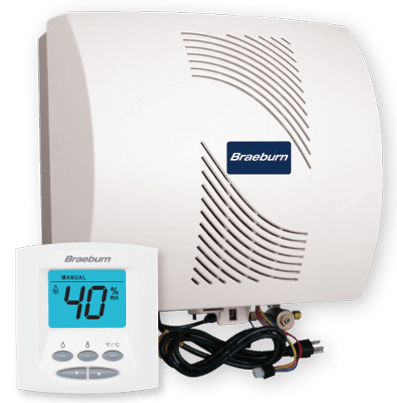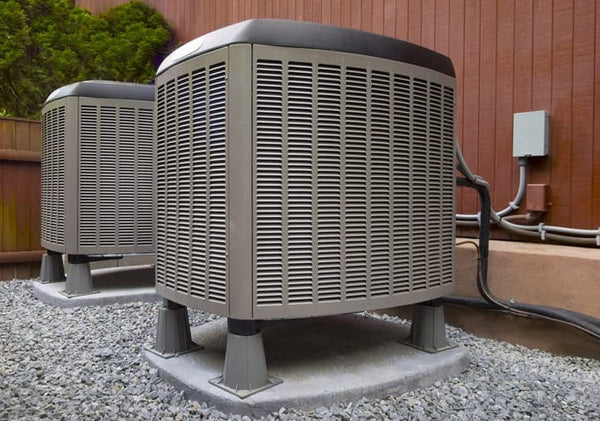
Thermostats are key pieces in your home or building’s HVAC system because they provide you with greater control over the temperature that you want to achieve. It is arguably its most important component due to this function. That is why it is also important to place much care on your thermostat.
But no matter how much care you put in, certain situations may arise wherein your thermostat may need replacing. These situations include a broken thermostat, glitches, or upgrading the unit to a more advanced model to take advantage of advanced features on newer, more advanced models. For this reason, you will need to understand how to change your thermostat properly in order to avoid future problems occurring due to an incorrect installation.
Types of Thermostats
Not all thermostats are created equally. Some thermostats are manually-operated while some can be programmed to perform automated tasks related to your temperature requirements. These differences in the type and function of the thermostats create differences in the procedures in which these thermostats are installed. That is why in order to know how to install thermostats properly, each type should first be identified.
Mechanical Thermostat
Also known as traditional or analog, mechanical thermostats are devices that contain heat-sensitive bimetallic strips or vapor-filled bellows that have the ability to respond to various changes in the temperature. They are often found in older, more traditional homes and are often found to be unreliable due to the slow responses of the bimetallic strip, which results in significant variations in the temperature.
Non-Programmable Thermostat
Non-programmable thermostats are a type of digital thermostat that is completely solid-state, which means that they are deemed more accurate since they are able to provide temperature readings with fewer fluctuations than their mechanical counterpart. They make use of a solid-state temperature sensing device called a thermistor to detect changes in the temperature and then uses a circuit board along with user settings to provide a reading on the information about the HVAC system.
Programmable Thermostat

There are actually two types of programmable thermostats, namely programmable digital thermostats and programmable mechanical thermostats. Mechanical thermostats that are programmable, however, are very old and are difficult to find. Programmable digital thermostats have now replaced their mechanical counterparts. Digital thermostats offer multiple functions and settings that provides users with access to a variety of added functions and program these functions in a variety of combinations to suit the user’s preferences. It is helpful to note that there are some units that are quite easy to program while others can be very difficult to program and understand.
WiFi-Enabled Thermostat
WiFi-enabled thermostats, also known as smart thermostats, are advanced-level thermostats that have the ability to learn the behaviors of your home through the use of the internet. They use WiFi in order to provide additional layers of control over your home or office’s HVAC system and can be controlled by your computer, tablet, and smartphone. Most WiFi-enabled thermostats on the market today have the ability to adjust itself based on the behavior it has learned after prolonged use.
Reasons to Replace Your Thermostat
Thermostats encounter various problems throughout their entire existence. Just because some problems are encountered, however, doesn’t necessarily mean that they require replacing immediately. There are some instances may arise where a specific part just might need minor repairs or replacement. In some cases, there are specific situations wherein the replacement of the entire unit is needed. These situations include:
- The malfunctioning of the unit cannot easily be attributed to a loose wire, dust buildup, or corrosion.
- When the unit doesn’t display accurate information.
- When the user wants to upgrade to a better, more efficient unit.
But before you proceed with any replacements to your thermostat, make sure that you…
Turn Off Your Furnace and Air-conditioning Unit
Make sure your furnace, A/C, and all other units associated with your thermostat are turned off. Remember that the best form of security and safety is prevention. To do that, go to your breaker box and flip all the switches related to your A/C, furnace, and others. This is to ensure that they have indeed been turned off. Make sure they have indeed been turned off by adjusting your thermostat to the highest and then the lowest setting. If your furnace and A/C doesn’t turn on, then you’re good to go.
Preparing to Detach Your Thermostat
Be sure to note the type of thermostat that you have to note how to detach your specific type. Some thermostat models will have their entire bodies detached while for others, only the cover detaches. Once you’ve done that, carefully detach the body/cover of the thermostat and note the number of low-voltage wires present and the terminals in which they are connected. This will make it easier for you to install your new unit when you just duplicate the connections.
Install the Mounting Plate for the Replacement Thermostat
Depending on the types of the old and replacement thermostat, you will need to replace the wall mounts for each thermostat unit. To do this, you will need to first detach the old wall mount using the appropriate screwdriver. Then, install the mounting plate for your new thermostat. Take special care to prevent the wires from falling back into the wall. Once the new mount has been attached, attach the wires to the correct terminal by matching the colors of the wires with the corresponding terminal.
Installing the New Thermostat Unit
Once the wall mount has been securely attached to the wall and all the wires have been connected to the appropriate terminals, attach the new thermostat face. This should be a fairly simple step to accomplish. Otherwise, refer to the user manual for instructions on how to attach the face.
Configuring Your New Thermostat
Return to your breaker and turn the power back on to your furnace and air-conditioning unit. The natural next step is to configure the new thermostat – but herein lies the tricky part. Configuring the new thermostat will depend highly on the type you just installed. Mechanical thermostats are typically the easiest to configure while programmable thermostats are the most difficult. It is best to consult the user manual to find out how to properly configure your thermostat to avoid any problems.


